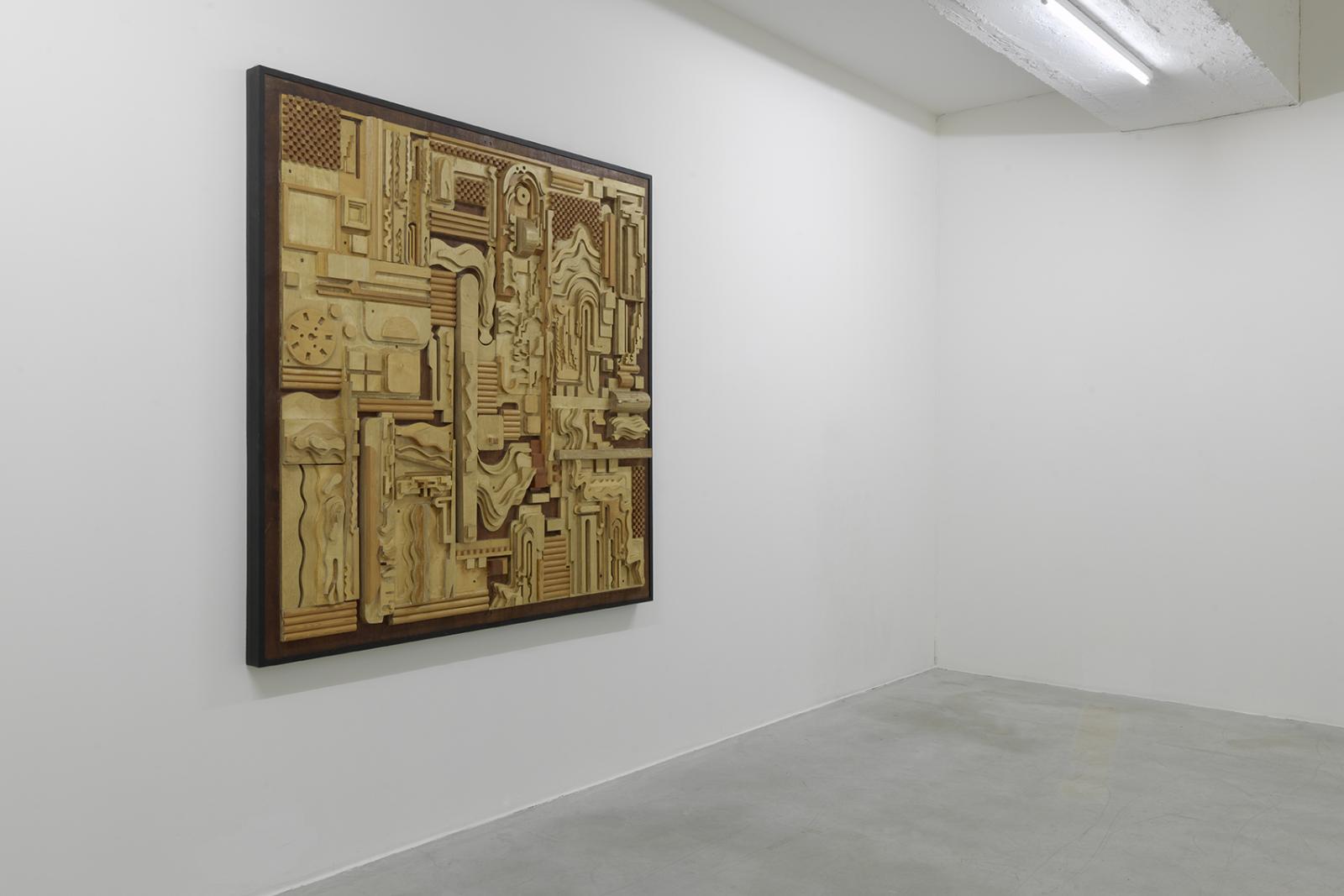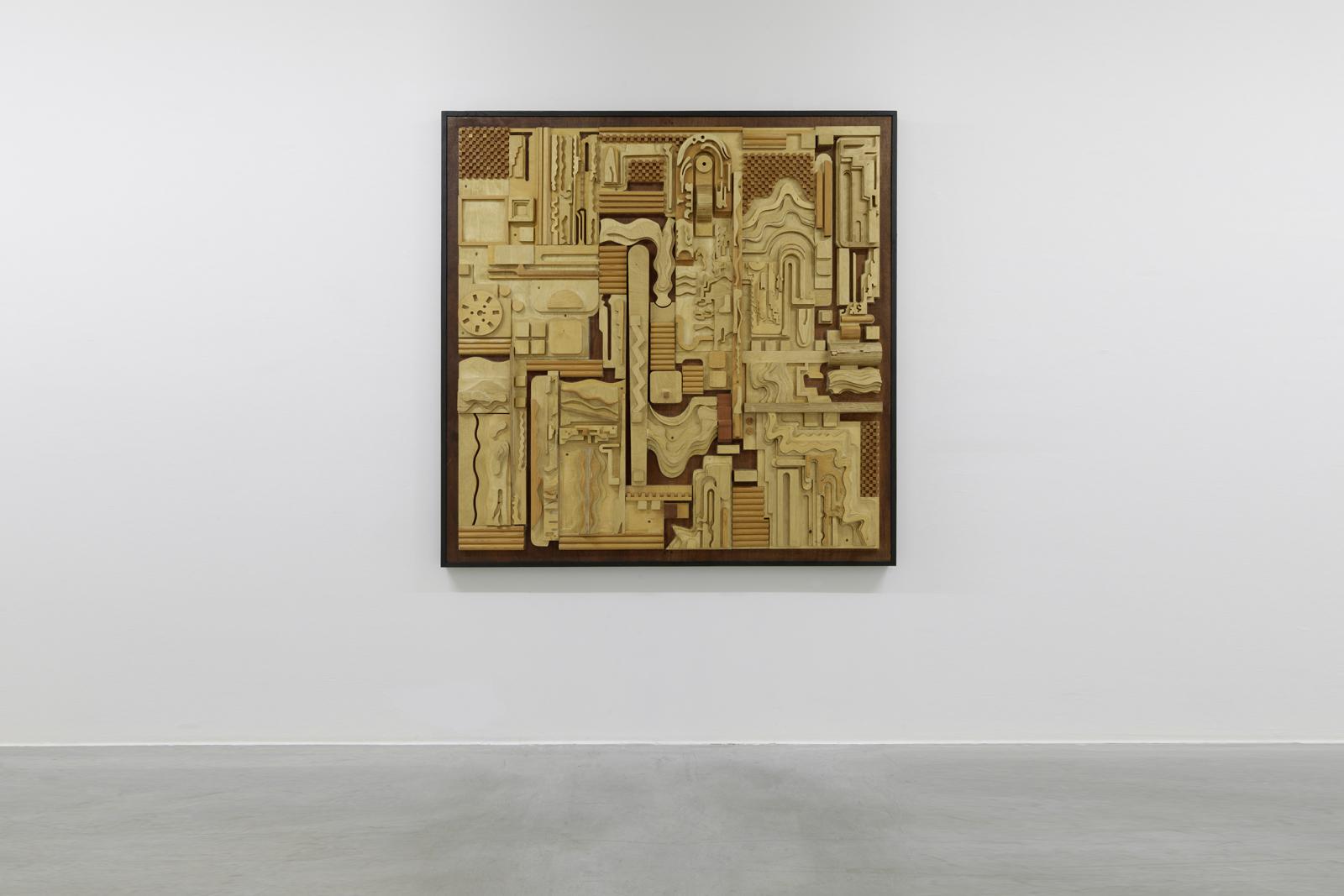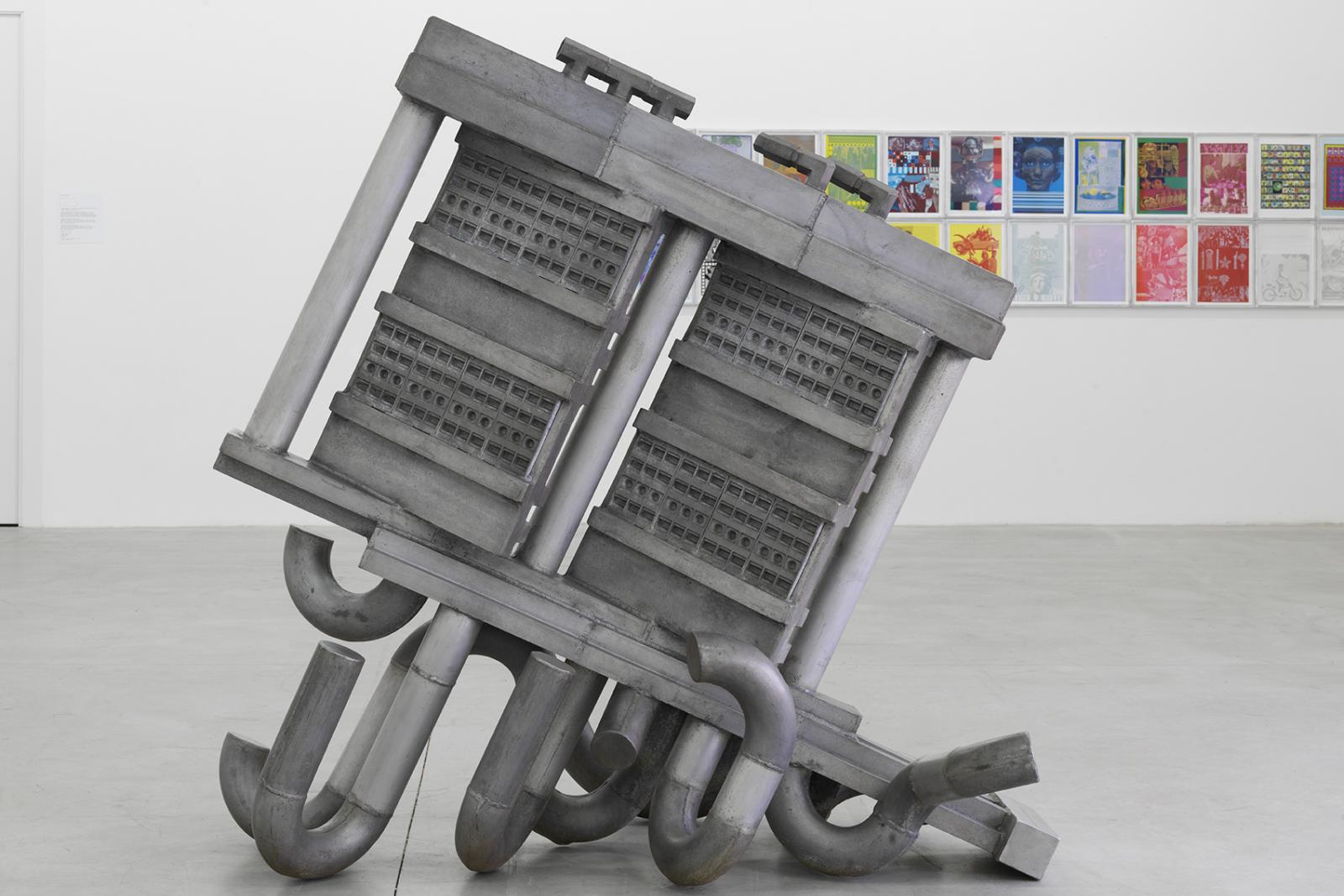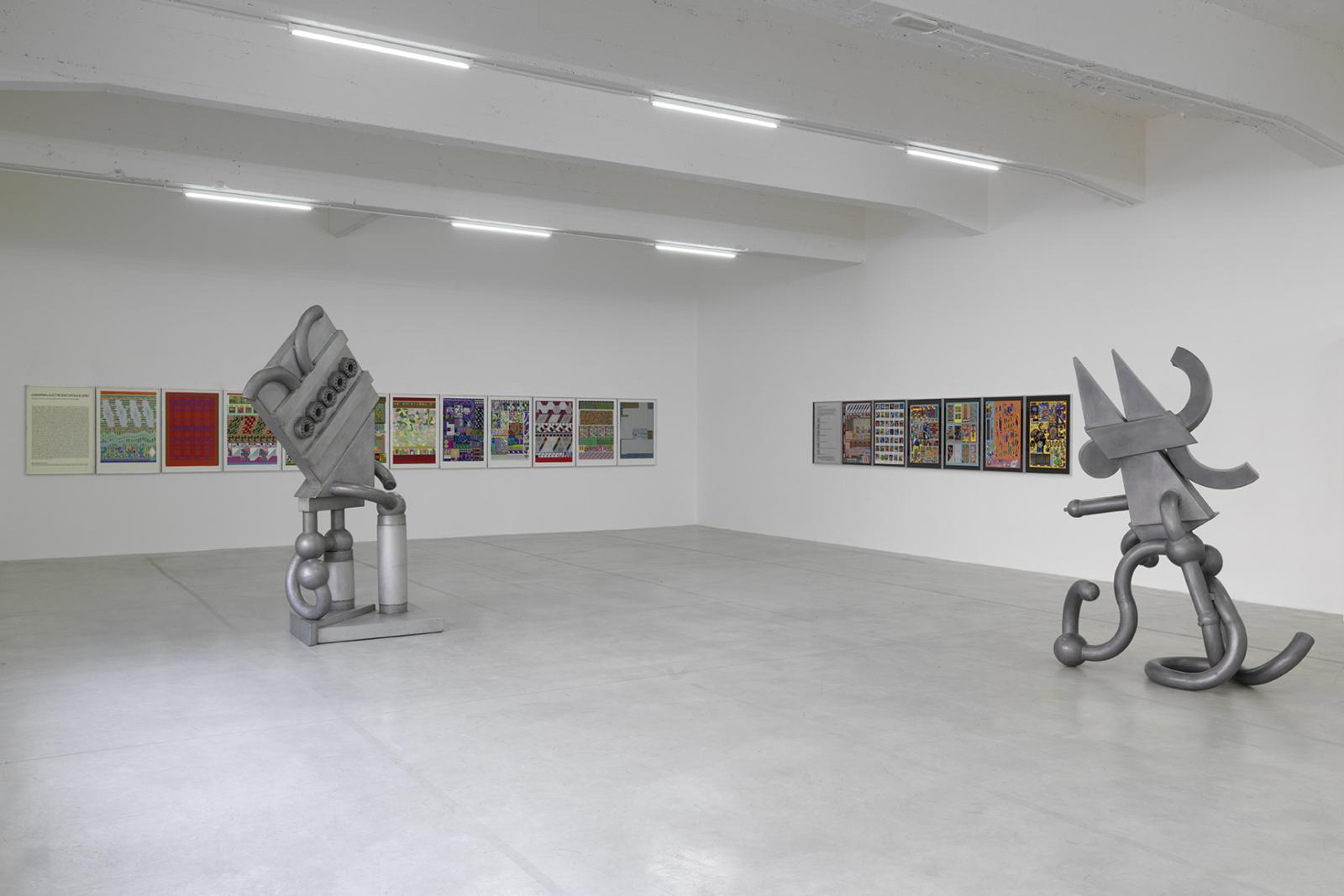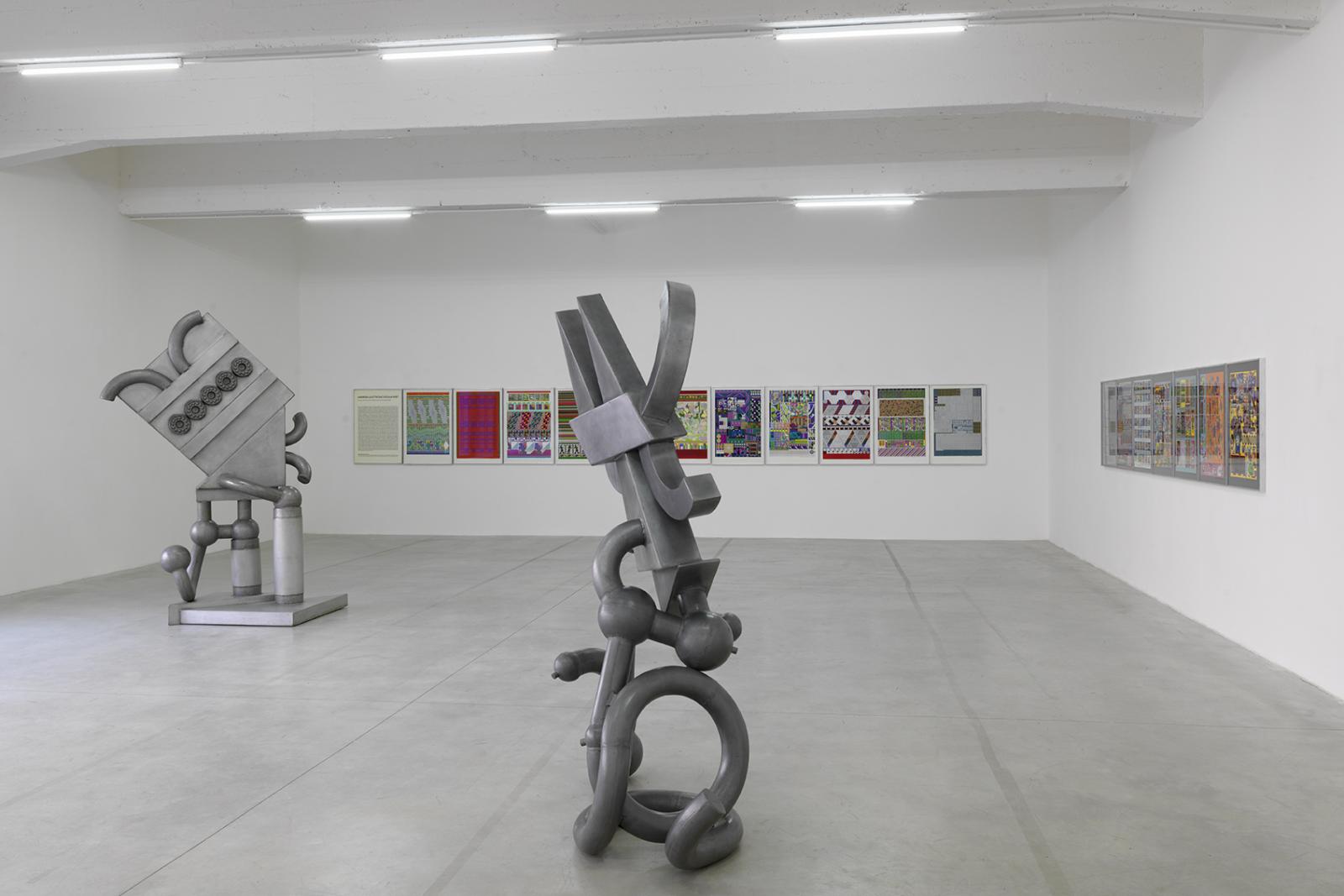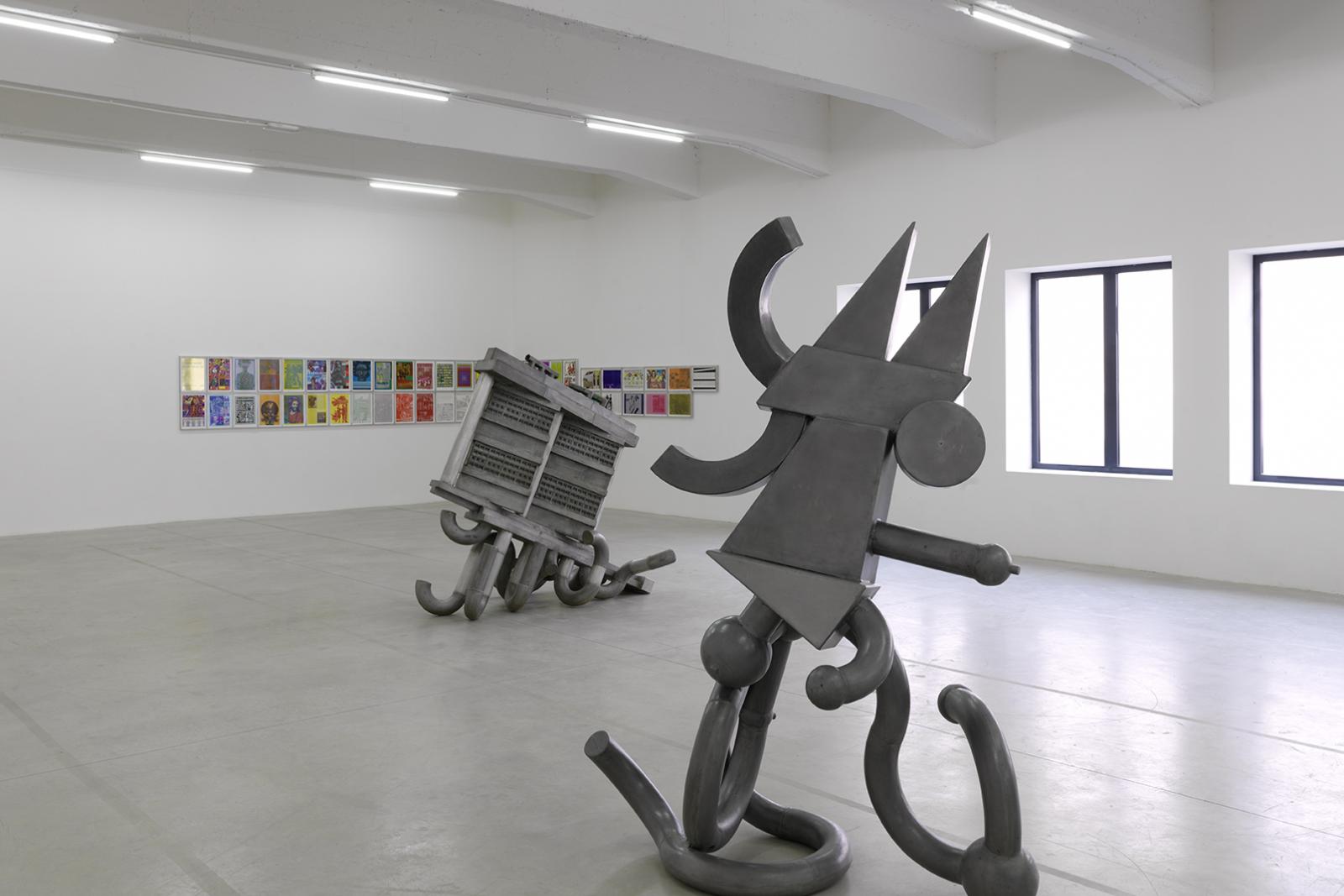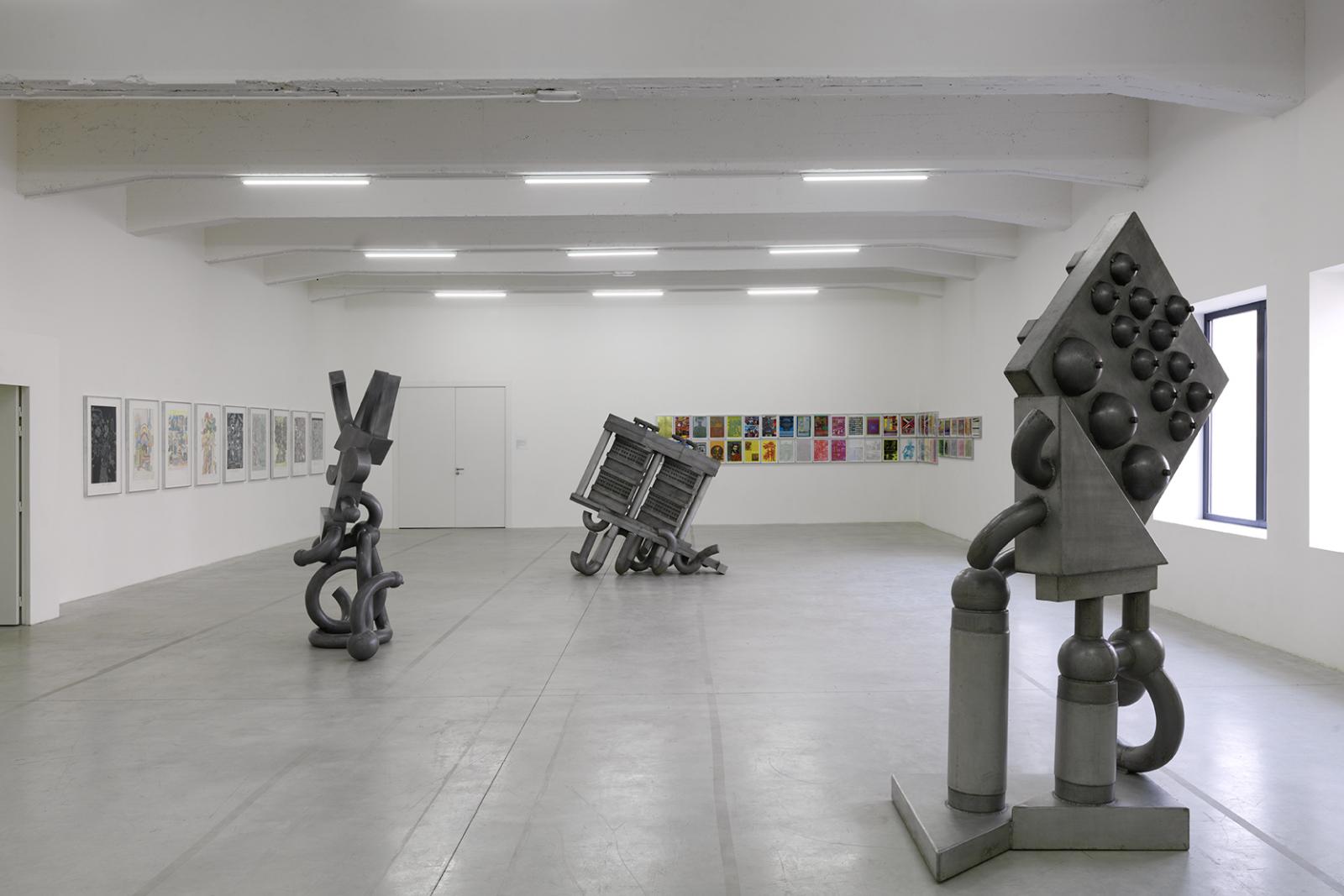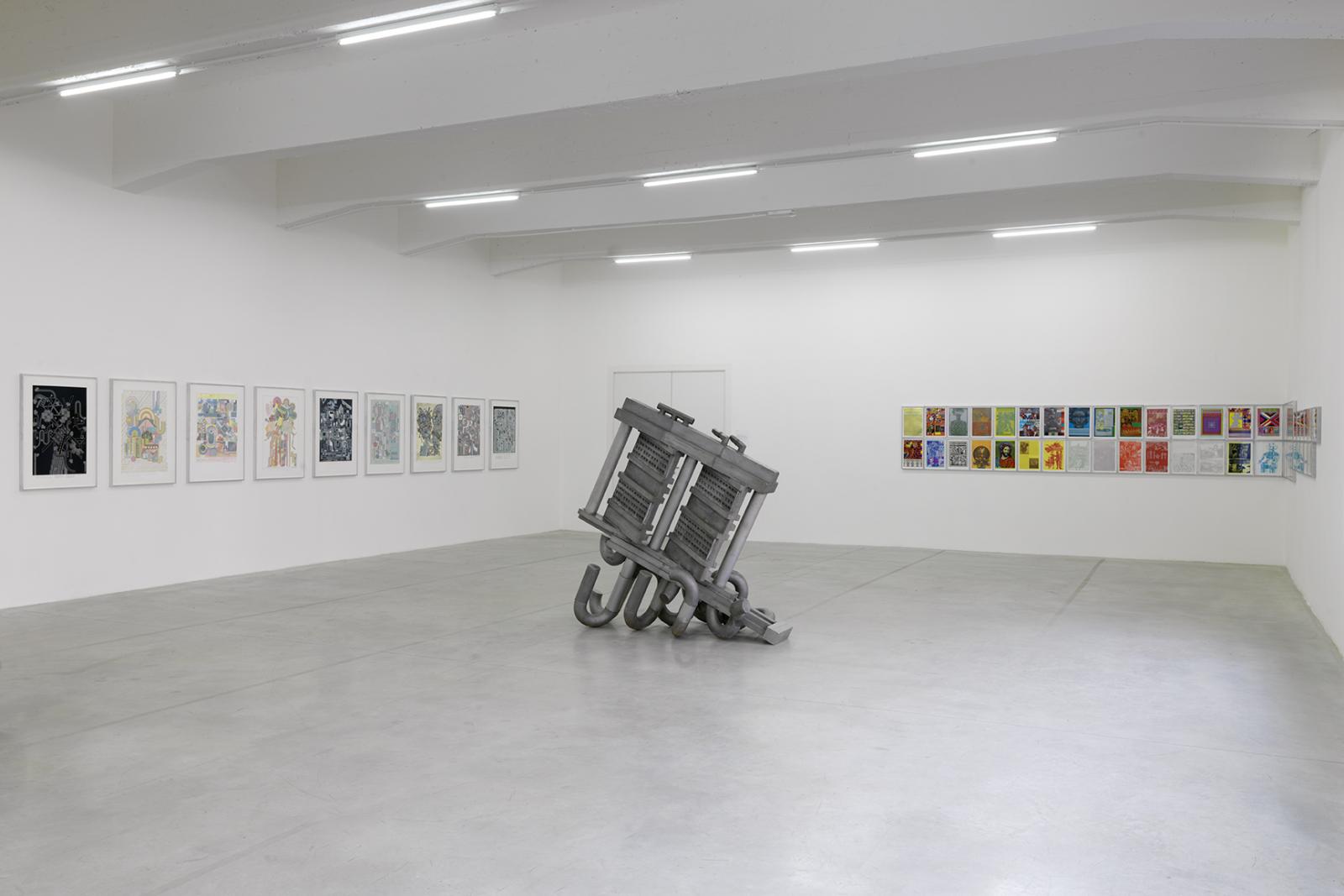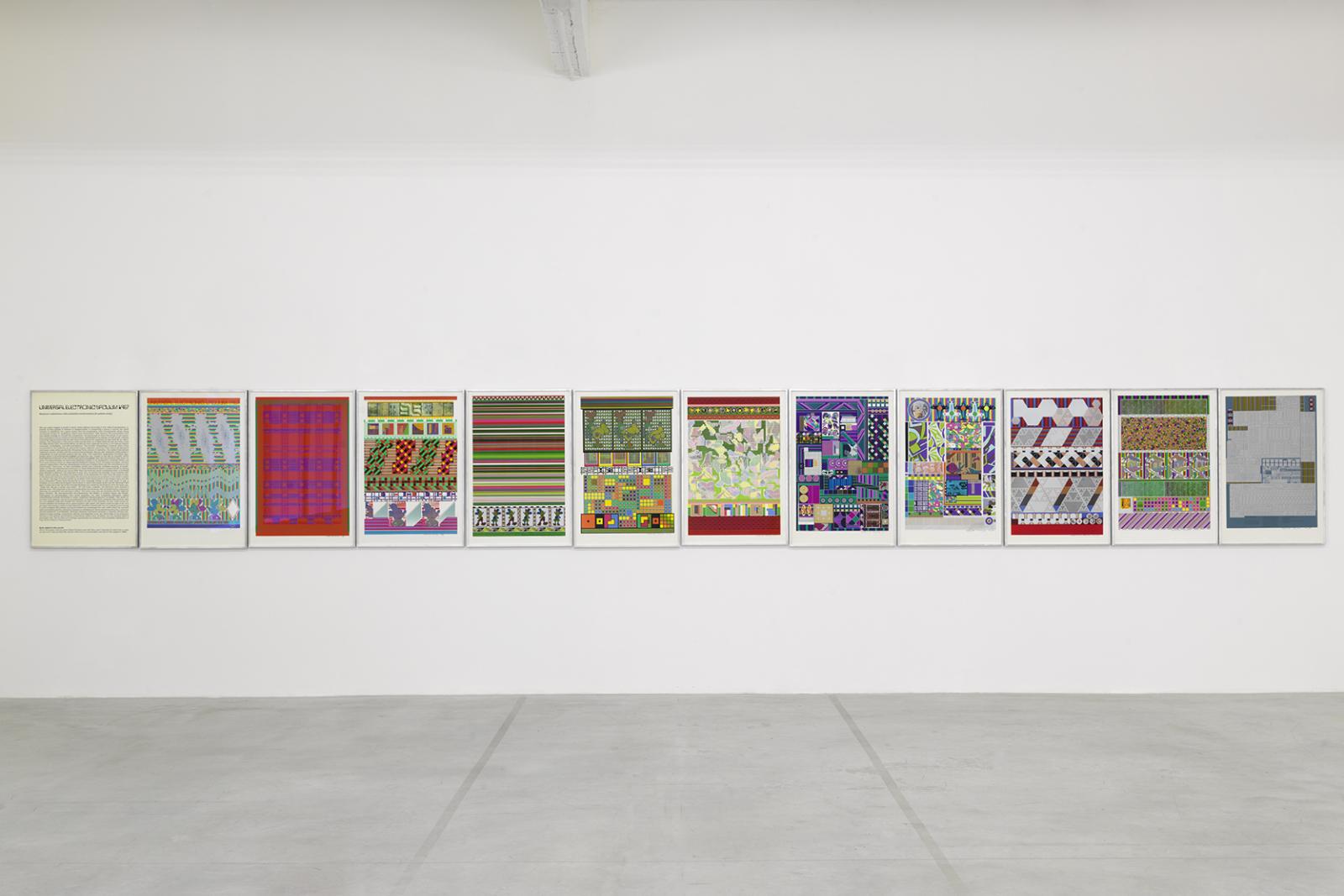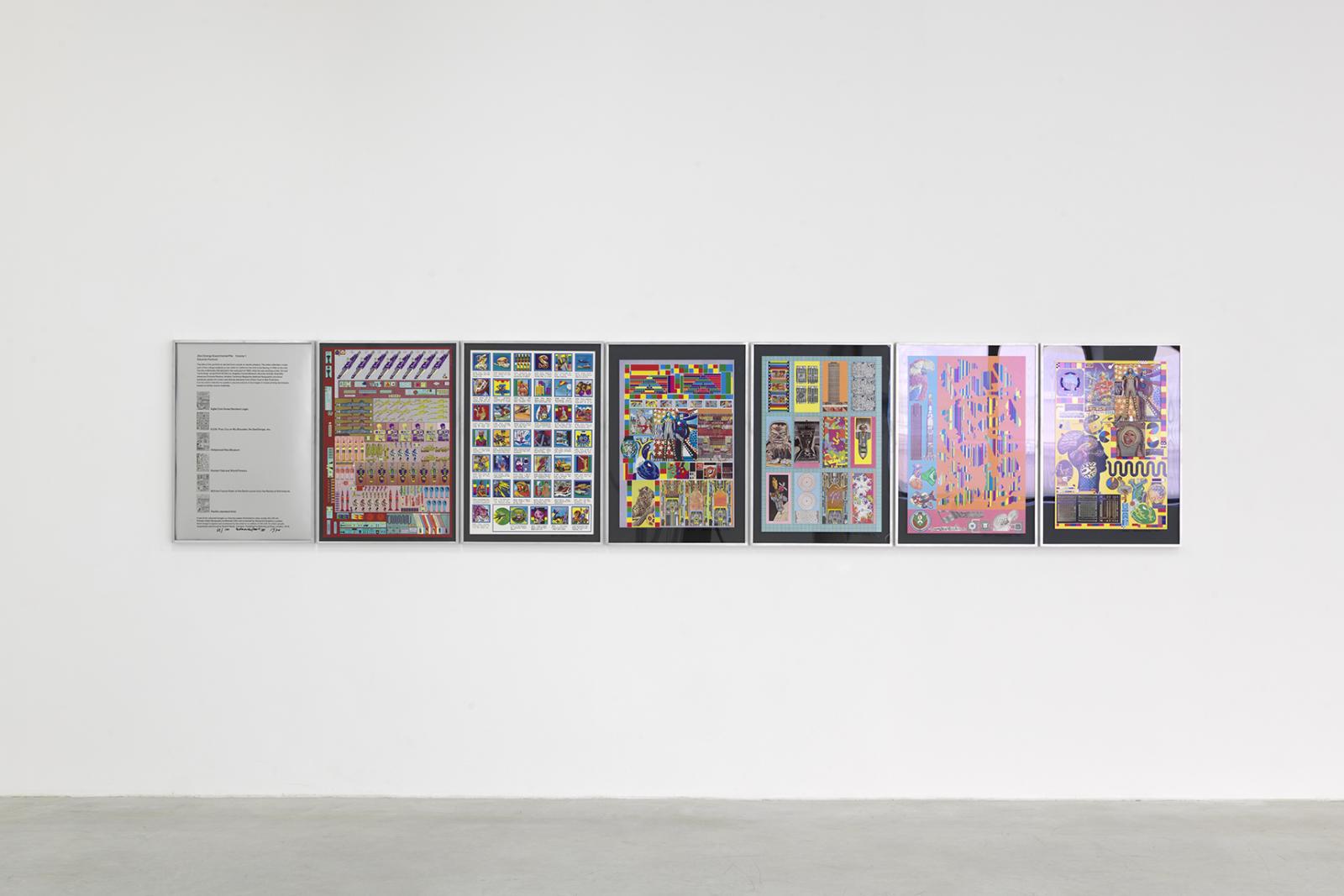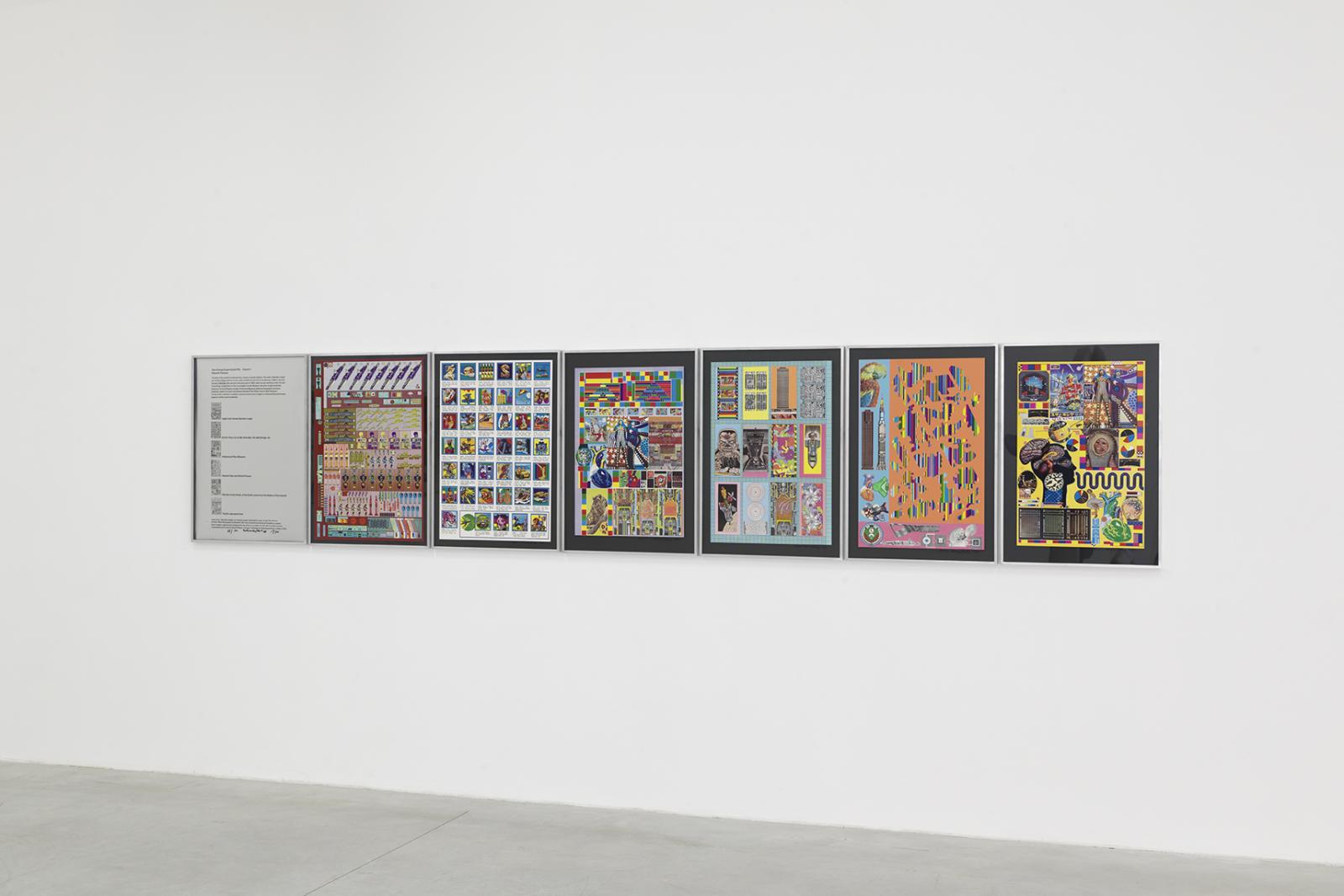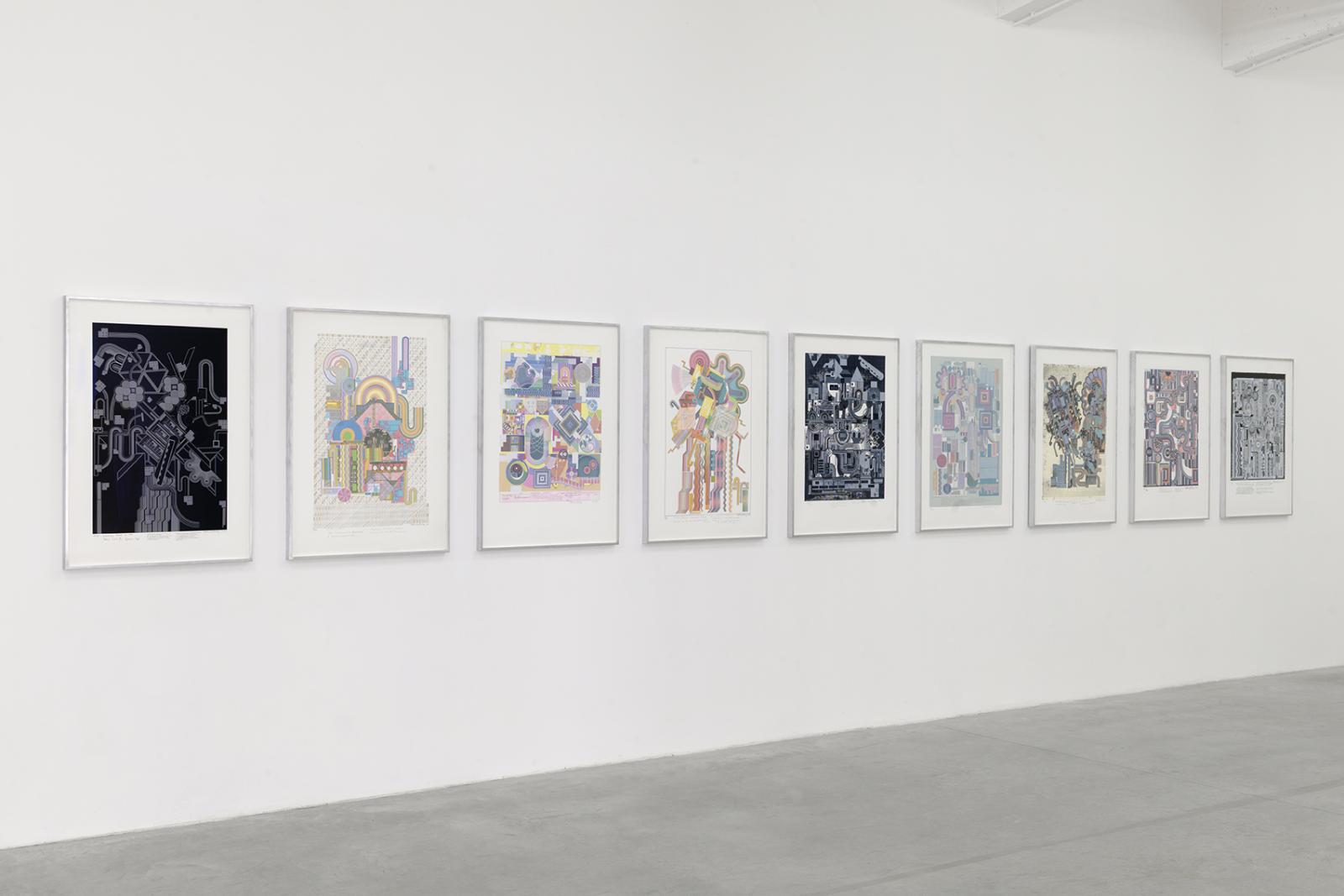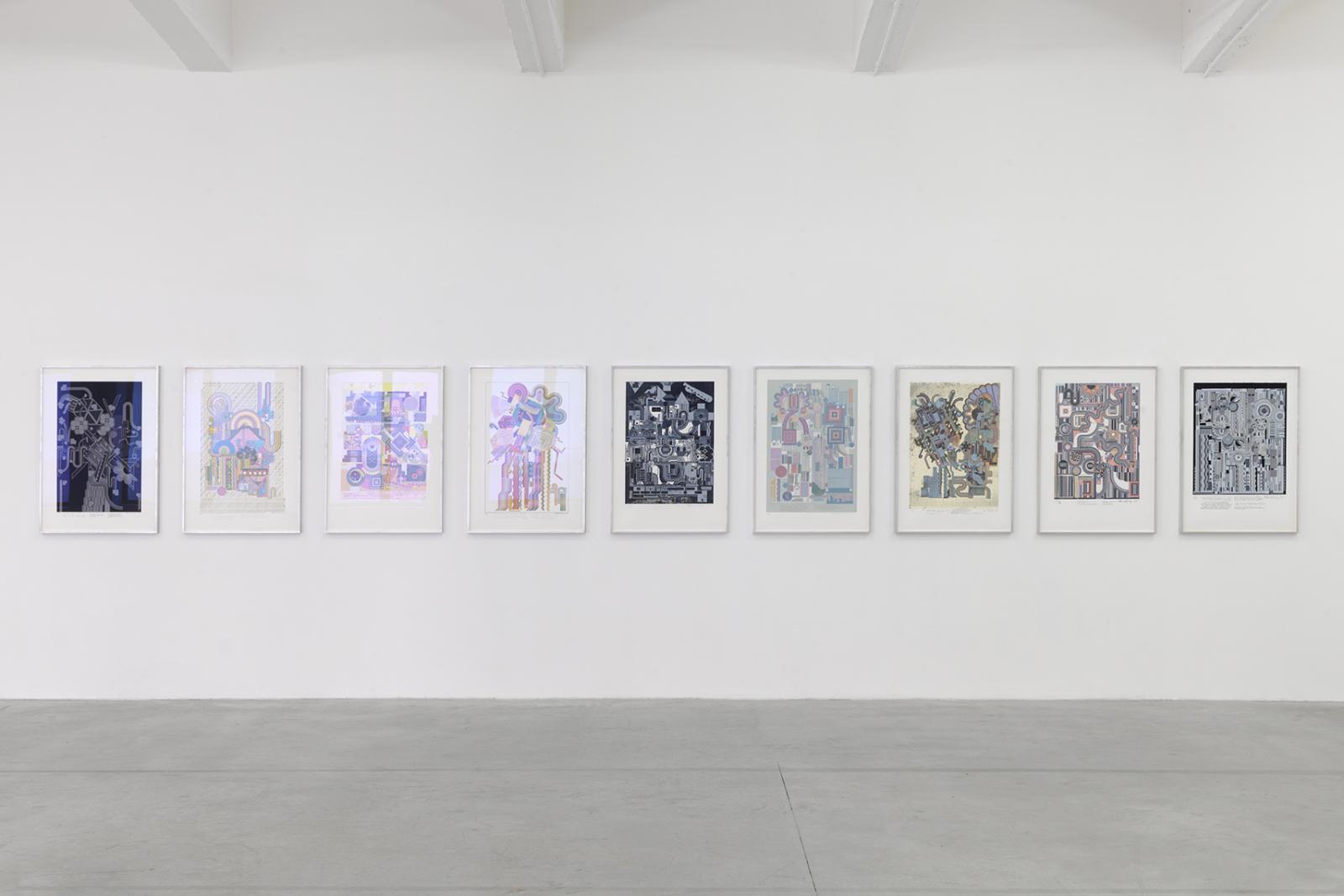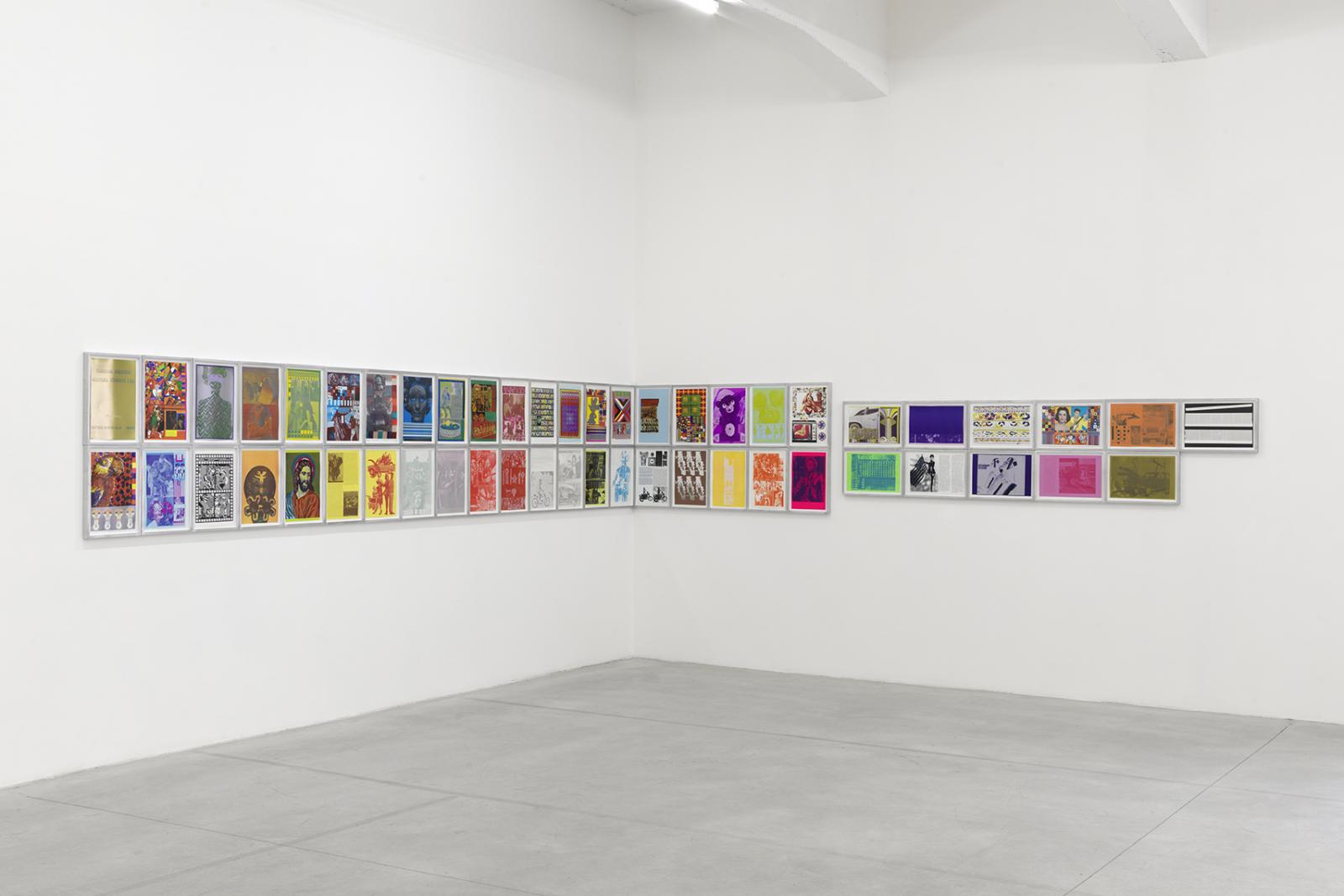L'Almanach 16 : Eduardo Paolozzi
Like Dr. Jekyll and Mr. Hyde, Paolozzi seems to present a case of duality; he is both the artist who participated in the birth of an absolutely new aesthetic movement, from which he would eventually drift apart, and the one who finally enlisted within the ranks of official art, steps that culminated in 1986 with the title of "Her Majesty's Sculptor-in-Ordinary for Scotland," which he kept until his death. The formal distance that can exist between certain of his artworks bears witness to this, most notably between the works that precede the mid-1970s and the pieces that came after. The Paolozzi presented here is the Pop Art forerunner, the originator with Reyner Banham, Richard Hamilton, Lawrence Alloway and others of the Independent Group (from 1952 on), the circle within which the term “Pop” was born.
Defining himself as a Surrealist, playing with images and exploring the subconscious, Paolozzi compulsively collected all kinds of printed images. From 1965 on, he undertook the mining of his collection for a large-scale project: to create a definite statement of modern humankind and its dilemma, in the shape of a 500-page book. This project took the shape of the General Dynamic F.U.N series, in two volumes (1965-1970)
The second volume presented in the exhibition is highly indicative of the artist’s obsession for the mechanical process and the creativity that emanates from it. This second edition is liberated from traditional printing techniques in favor of an experimental approach that layers screenprinting and photolithography, contrarily to the first volume which respected the classical process of printed art publishing. Paolozzi was proficient enough in serial production methods to be able to escape their principles. He would for example modify ink hues within the same print run, that is to say he found a way of re-injecting a unique character inside a system designed for identical results. This interest for production methods has then led him to explore a variety of mediums and techniques: sculpture, painting, ceramics, silkscreening, photography and lithography.
Beyond this deep attachment to the technical and technological evolutions which have allowed him to give a shape to his productions, the machine-object and its resulting output is obviously omnipresent and largely represented in his work.
Even when his sculptures take the appearance of a human figure, like Parrot (1964) which nevertheless seems to belong to another genre rather referring to the art brut tradition, they don’t evade a mechanical aspect.
The body of work presented here reflects the image of a constructed, elaborated, standardized, mapped out world, where the intervention from machines is an unavoidable step. This statement of intent almost inevitably recalls urban life and an urban image made visible by borrowing the visual codes of advertisement (Zero Energy Experimental Pile, Universal Electronic Vacuum, General Dynamic F.U.N) of architecture and urbanism ones (Collage City).
The Calcium Light Night series, even though it is presented as a visual interpretation of the life and work of American composer Charles Ives, looks like—in some specific ways—a mapping or what Kevin Lynch defines as a mental image (also involving sensorial perception) a user can have of a city with its paths, neighborhoods, hubs, landmarks, and limits. The array of work assembled here is graphically very vibrant. The editions’ aesthetic is resolutely contemporary; it would be possible to think, at the risk of being mistaken, that these are the works of fashionable fifty-something Parisian graphic designers.
—Xavier Douroux.
Eduardo Paolozzi was born in Leith, Scotland, in 1924 and died in London in 2005.
